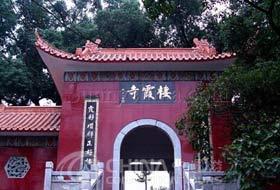 Qixia Temple, on Qixia Mountain, is located at the foot of Fengxiang Peak, Qixiashan Mountain, 20 kilometers northeast of the city, was founded by the Buddhist monk Ming Sengshao during the Southern Qi dynasty, and is still an active place of worship. It has long been one of China's most important monasteries from the Southern and Northern Dynasties (420-581AD) and even today is one of the largest Buddhist seminaries in the country. It houses the Dagoba, the Qianfoya (Thousand-Buddha Grottoes) and other cultural relics.
Qixia Temple, on Qixia Mountain, is located at the foot of Fengxiang Peak, Qixiashan Mountain, 20 kilometers northeast of the city, was founded by the Buddhist monk Ming Sengshao during the Southern Qi dynasty, and is still an active place of worship. It has long been one of China's most important monasteries from the Southern and Northern Dynasties (420-581AD) and even today is one of the largest Buddhist seminaries in the country. It houses the Dagoba, the Qianfoya (Thousand-Buddha Grottoes) and other cultural relics.
There are two main temple halls: the Maitreya Hall, with a statue of the Maitreya Buddha sitting cross-legged at the entrance, and behind this the Vairocana Hall, housing a 5m-tall statue of Vairocana.
Behind the temple there are over 500 Buddhas carved into the niches of the Thousand Buddha cliff. Inside the last niche is a statue of the mason. The pagoda for Buddhist relics was originally built in the Sui Dynasty (581-618). It is an imitation made of wood with five stories. There are eight sides on each floor.
At the base of the pagoda is a relief sculpture of Buddha, while on the first floor are the sculptures of the four gods and flying apse. As the headquarters of the Jiangsu branch of the Chinese Buddhist Association, the temple has an extensive library of more than 7,200 volumes of Buddhist scriptures.
